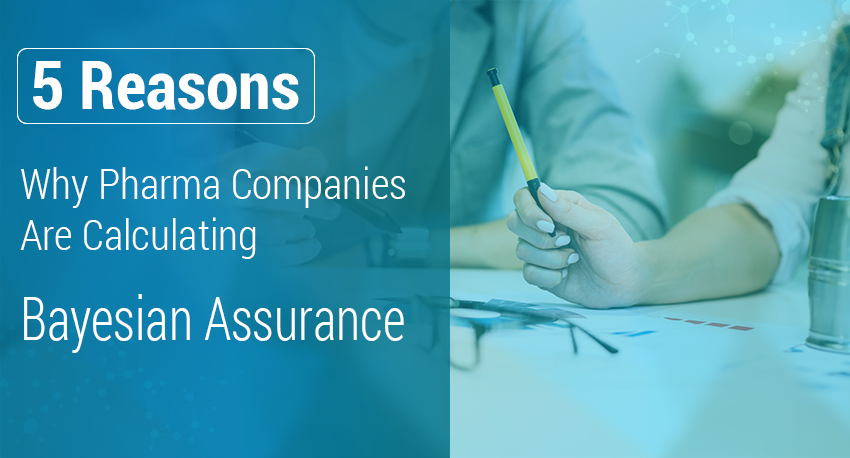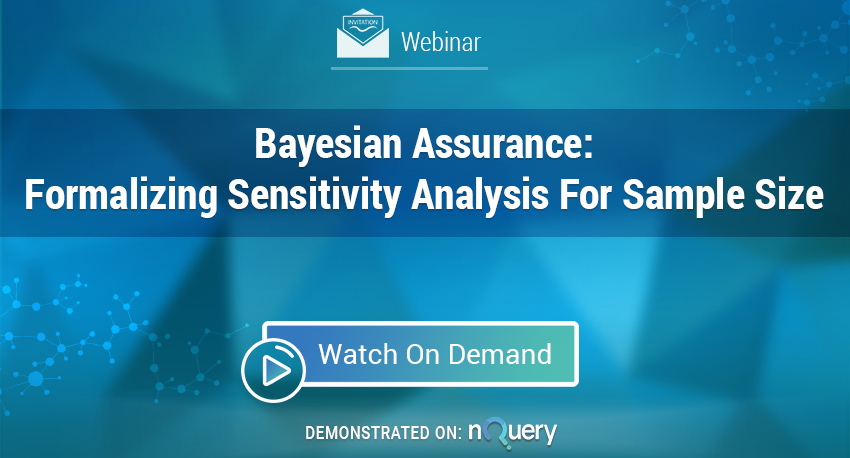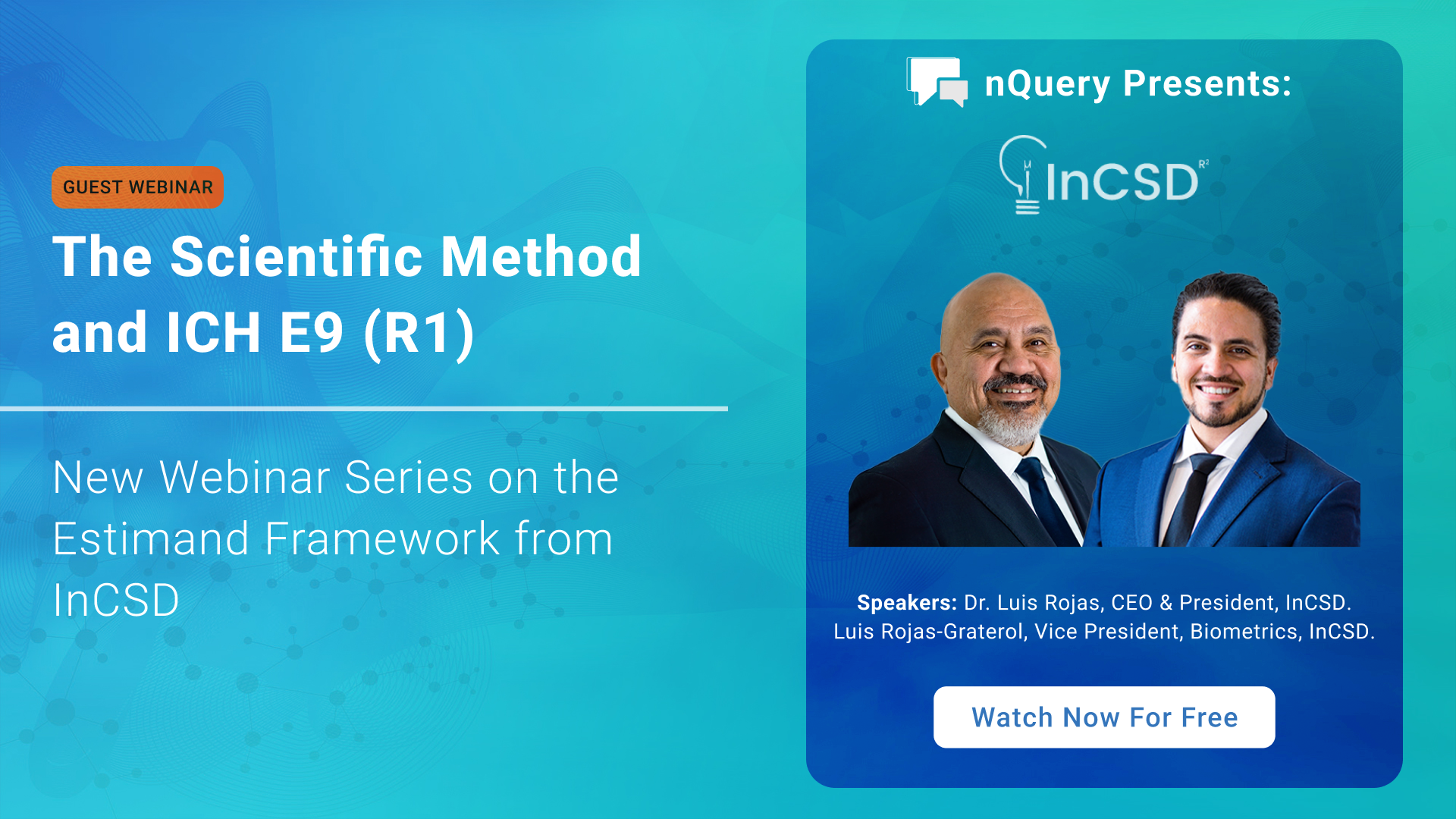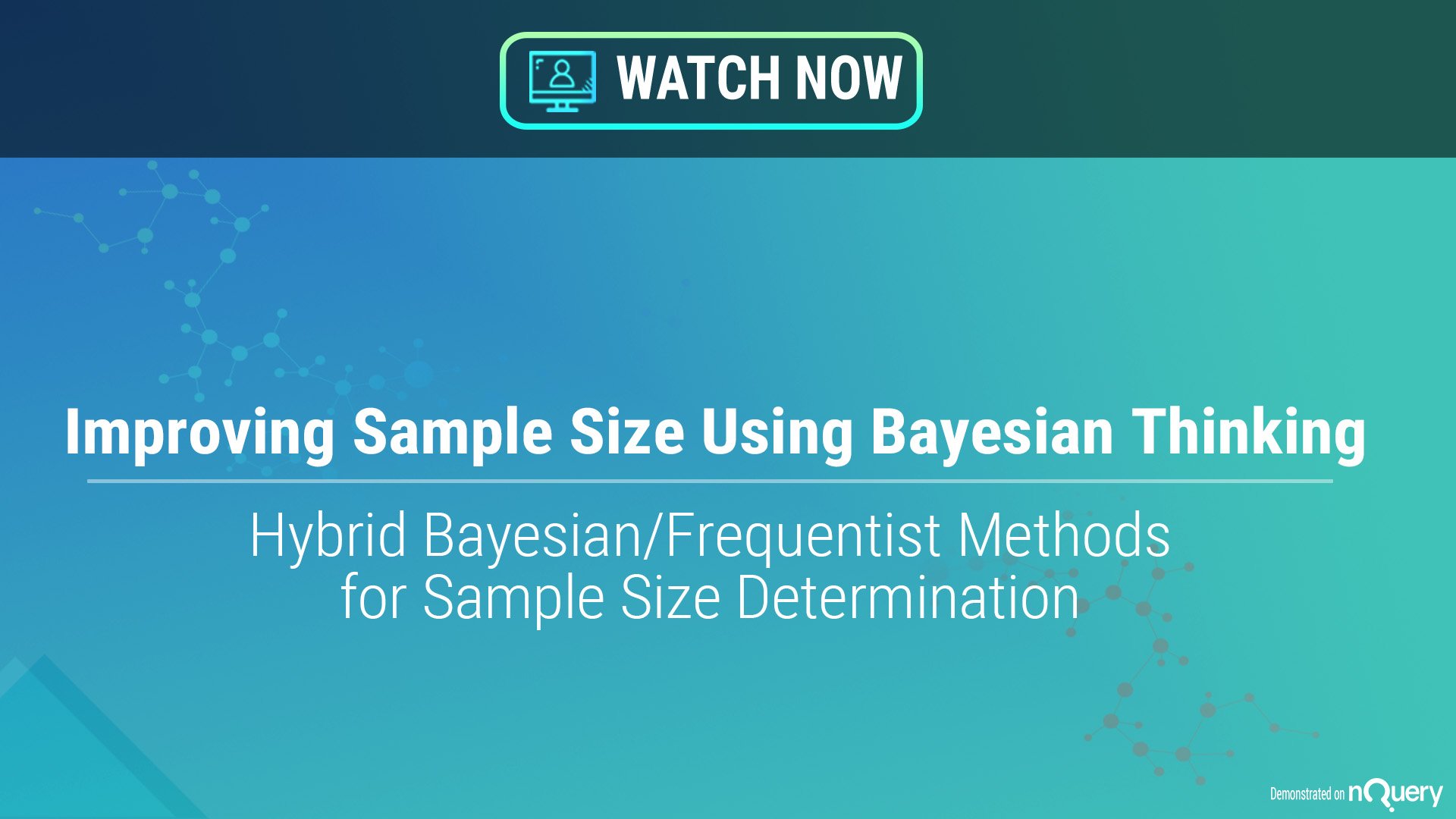The pharmaceutical industry is increasingly turning to Bayesian methods in an attempt to improve efficiency and enhance decision making. Assurance (Bayesian Power) is becoming a key feature of these Bayesian methods. This is not to replace traditional power but to complement it.
Before we continue, let us quickly examine what Bayesian Assurance is.
What is Bayesian Assurance?
Assurance is the unconditional probability that the trial will yield a ‘positive outcome’. A positive outcome usually means a statistically significant result, according to (some) standard frequentist significance test. The assurance is then the prior expectation of the power, averaged over the prior distribution for the unknown true treatment effect.
In the well received paper published by O’Hagan - he argues that Assurance is an important measure of the practical utility of a proposed trial, and indeed that it will often be appropriate to choose the size of the sample (and perhaps other aspects of the design) to achieve a desired assurance, rather than to achieve a desired power conditional on an assumed treatment effect. [1]
Today we see a rapidly rising number of pharma companies are adopting prior elicitation and seeking to make an Assurance calculation a standard procedure in their clinical trial planning framework - with GSK the most public in publishing their reflections on it. With that in mind let us review five reasons why Pharma companies are Calculating Bayesian Assurance.

1) Calculate the true probability of success of your trial
Biostatisticians are tasked with discovering the probability of success of a trial. This involves analysis and mitigating threats to the clinical trial. Using Assurance, statisticians can gain a greater insight to move towards a more informed answer to this question.
- Using Assurance also known as Bayesian Power, you can integrate prior uncertainty about the effect size or other parameters to gain a more complete understanding of your sample size estimate and trial design.
- These priors can be elicited and then integrated into frameworks such as the Sheffield Elicitation Framework (SHELF).
- Through the elicitation process all relevant data is summarized, reviewed and implicitly weighted. This provides a greater understanding allowing steps to be taken to mitigate problems to reduce the risk and cost of clinical trials.
2) Acknowledge assumptions may not be correct
Researchers acknowledge the complications of having completely correct assumptions when calculating tradition power. By assigning a prior to where we know there is uncertainty, researchers need to focus more on the uncertainty and have a more realistic interpretation of what you actually know. By using assurance we move towards the true probability - the unconditional probability of success.
3) Use as an important tool at Financial review boards
Bayesian Assurance is becoming an important tool at key milestones in the drug development process. This is due to the methodical approach required to reach an assurance calculation proved by elicitation their priors (e.g SHELF Framework) they have reviewed and identified threats and further opportunities that may not of previously been visible. This provides all parties a more informed decision at both macro and micro levels.
4) Use as an important tool at Scientific review boards
Calculating Bayesian Assurance also serves an important purpose at Scientific review boards. Presenting team beliefs in a probability distribution provides all involved a formalized opportunity to weight their beliefs and use this to identify gaps or opportunities to strengthen their study design and affect the later sample size.
5) Formalizes Your Sample Size Sensitivity Analysis
Connected to our 5 Essential Steps to Determine Sample Size & Power, a sensitivity analysis is the usual prescription for uncertainty in planning parameters. It provides information on which assumptions have the largest influence on the sample size required. However, one of the biggest flaws with sensitivity analysis is that there are no formal rules for how a sensitivity analysis should be conducted for a sample size determination. We are of the belief that calculating Bayesian Assurance can help formalize your sample size sensitivity analysis.
- The lack of a formalized method for conducting a sensitivity analysis for sample size determination often results in the benefits of a sensitivity analysis being omitted from clinical trial planning. As a result this increases the risk and therefore cost.
- Assurance is vital contextual tool in the planning toolbox and places uncertainty at the heart of sample size determination. Researchers receive valuable decision making information in the form of an Assurance (A) calculation. Using this they can discover the likelihood of a “positive” trial outcome and thus make better decisions on what trials to back.
- While sensitivity analysis will likely retain an important exploratory role in sample size determination due to its tactile nature, the integration of Bayesian methods may help formally make prior parameter uncertainty a central component of every sample size determination.
See how to put this into practice
nQuery Sample Size Software has a dedicated Bayesian module that allows the easy calculation of Assurance. If you are interested in trialling this yourself, click here to request a free trial.
Interested in learning more about Bayesian Assurance?
We recently hosted a webinar Bayesian Assurance: Formalizing Sensitivity Analysis For Sample Size.
You can watch this webinar on demand by clicking the image below.

In this webinar you’ll learn about:
- Benefits of Sensitivity Analysis: What does the researcher gain by conducting a sensitivity analysis?
- Why isn't Sensitivity Analysis formalized: Why does sensitivity analysis still lack the type of formalized rules and grounding to make it a routine part of sample size determination in every field?
- How Bayesian Assurance works: Using Bayesian Assurance provides key contextual information on what is likely to happen over the total range possible values rather than the small number of fixed points used in a sensitivity analysis
- Elicitation & SHELF: How expert opinion is elicited and then how to integrate these opinions with each other plus prior data using the Sheffield Elicitation Framework (SHELF)
- Why use in both Frequentist or Bayesian analysis: How and why these methods can be used for studies which will use Frequentist or Bayesian methods in their final analysis
Further Reading:
[1] O’Hagan A, Stevens JW, Campbell MJ. Assurance in clinical trial design. Pharmaceutical Statistics 2005; 4:187-201 - https://doi.org/10.1002/pst.175




















No Comments Yet
Let us know what you think